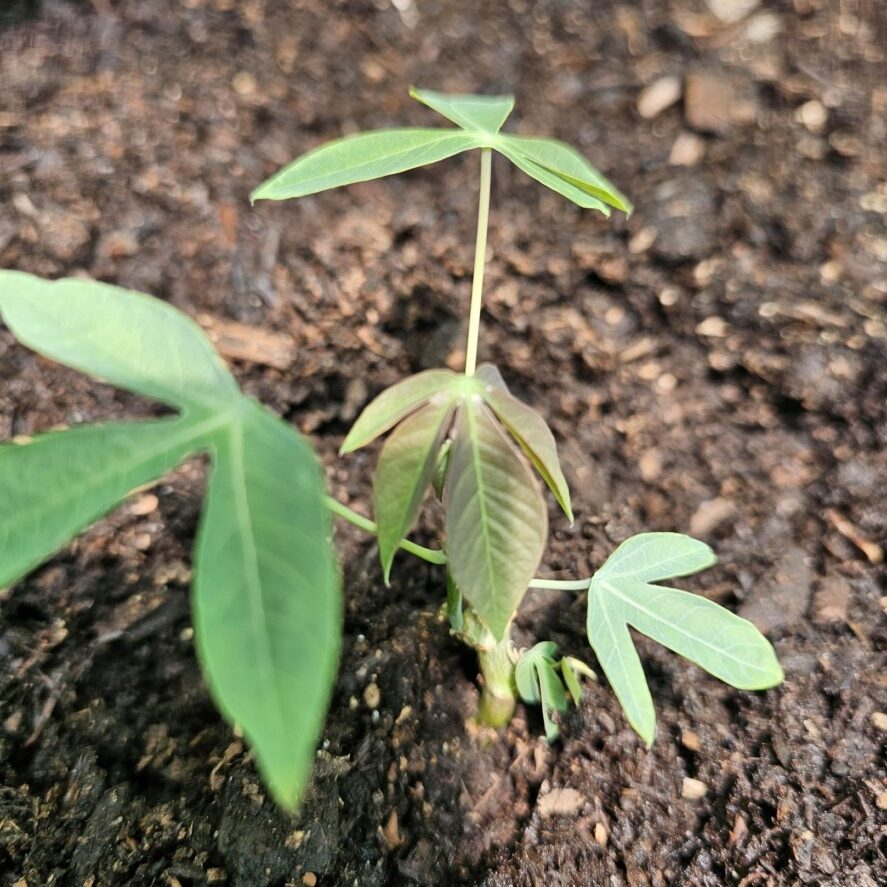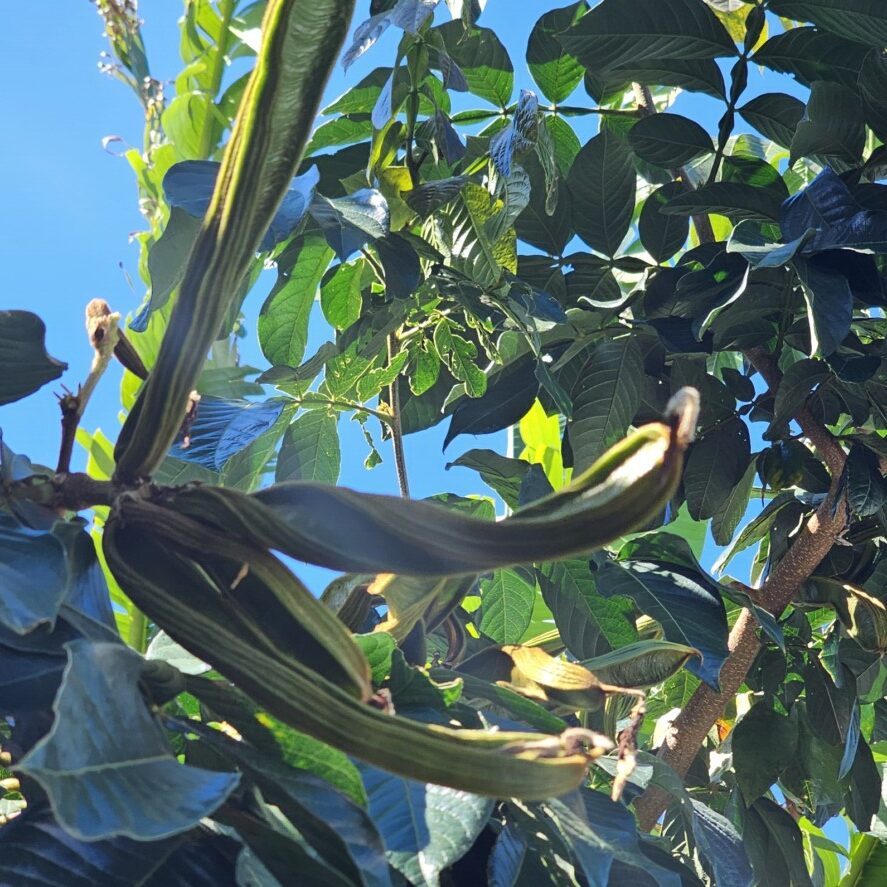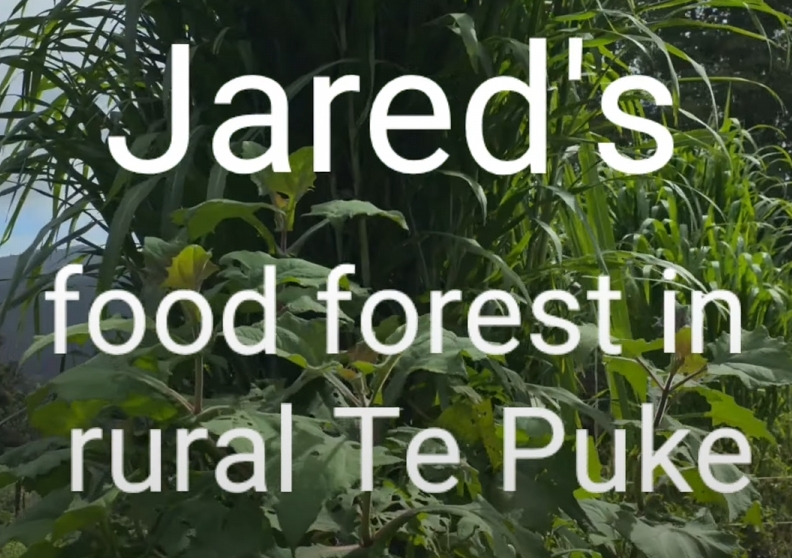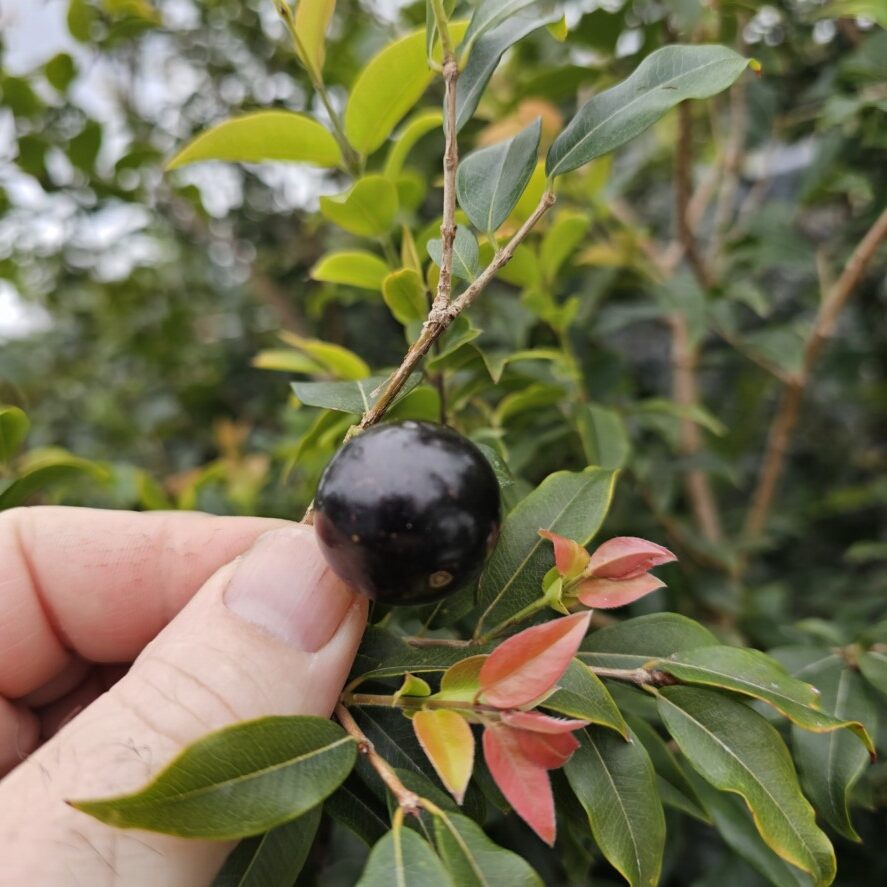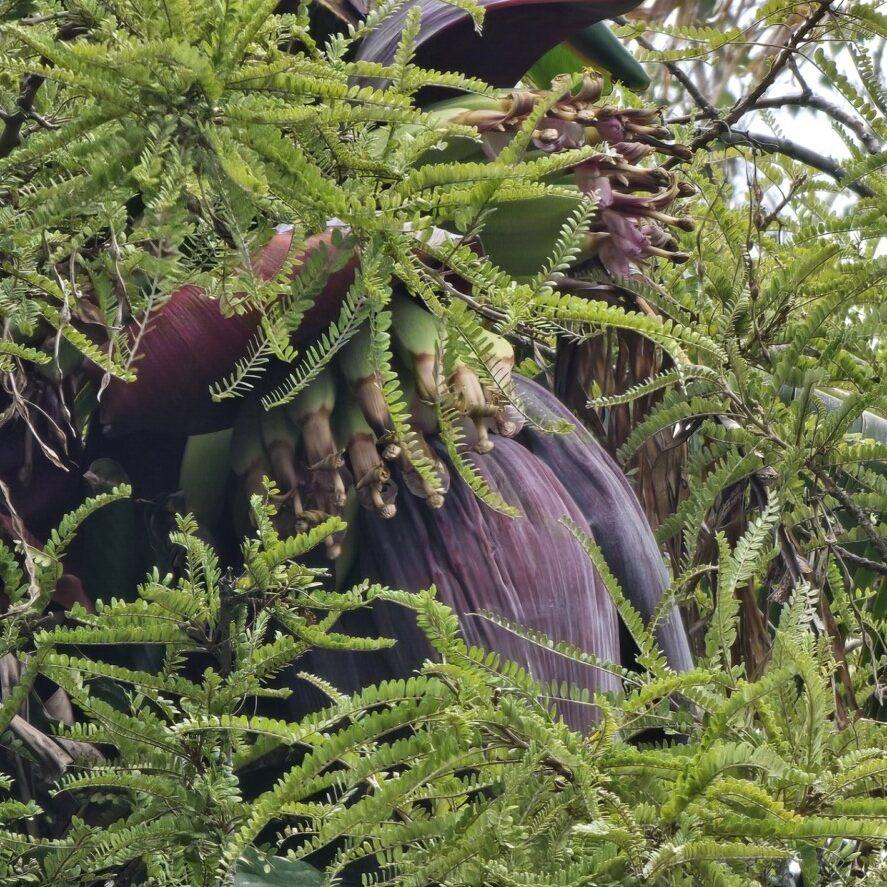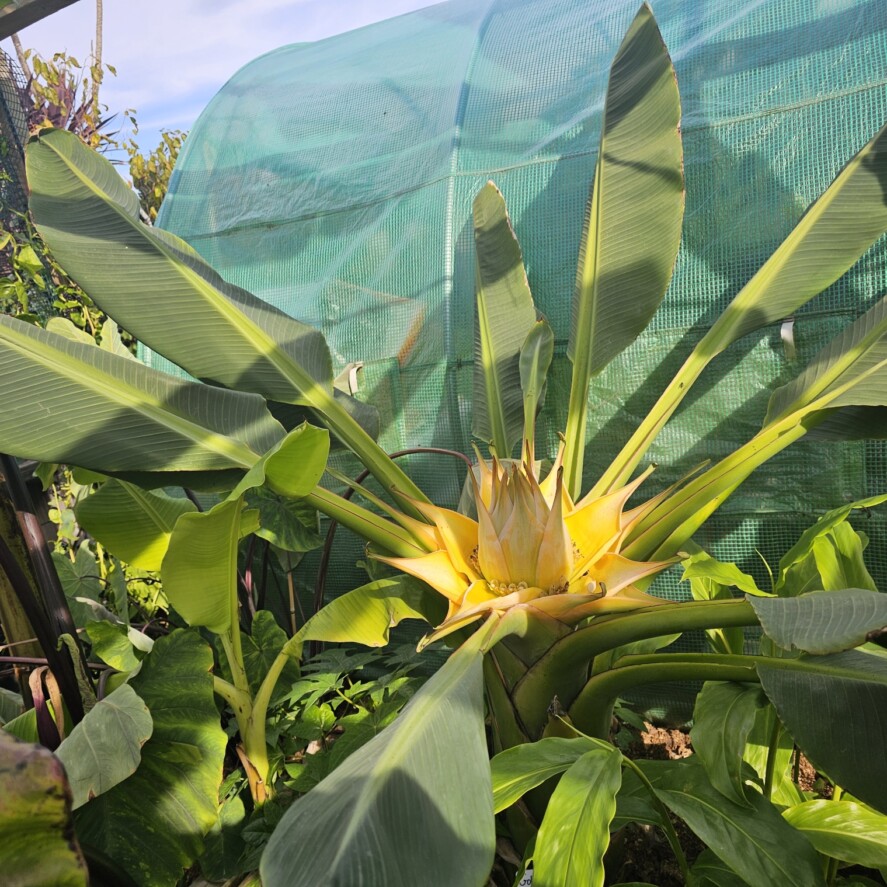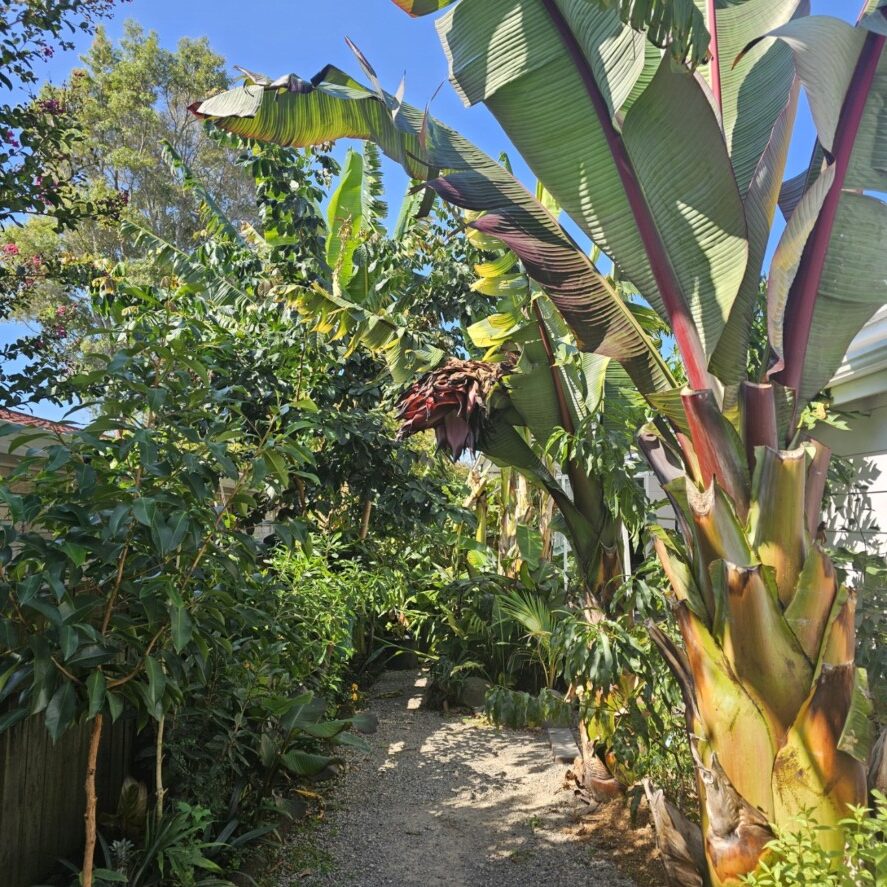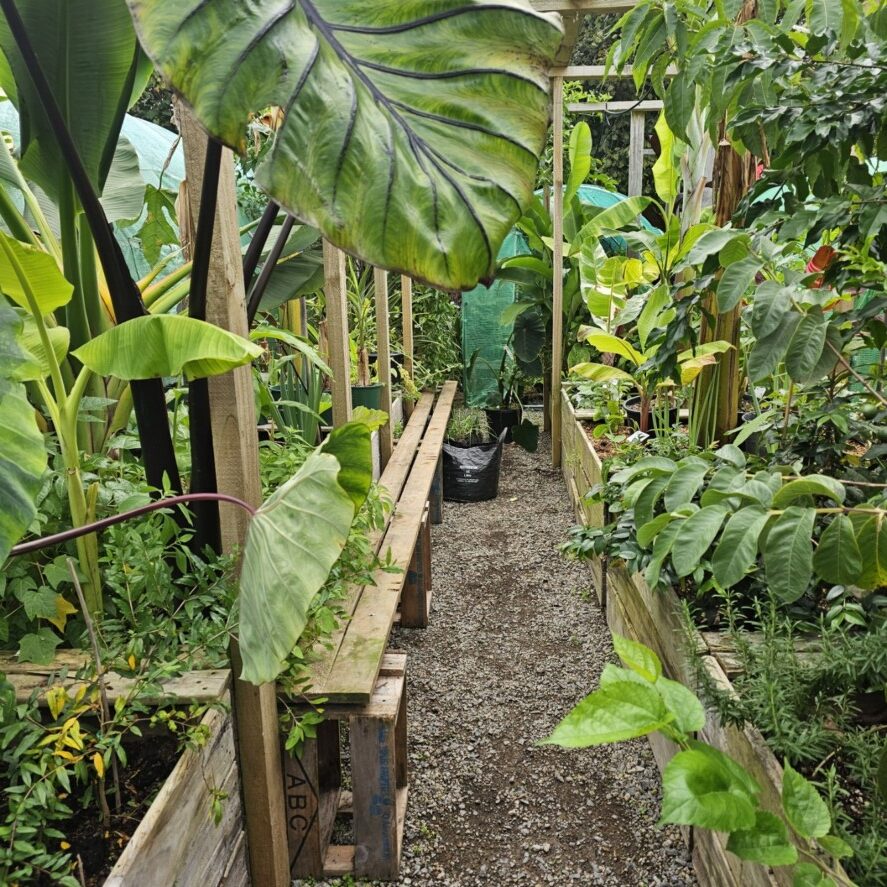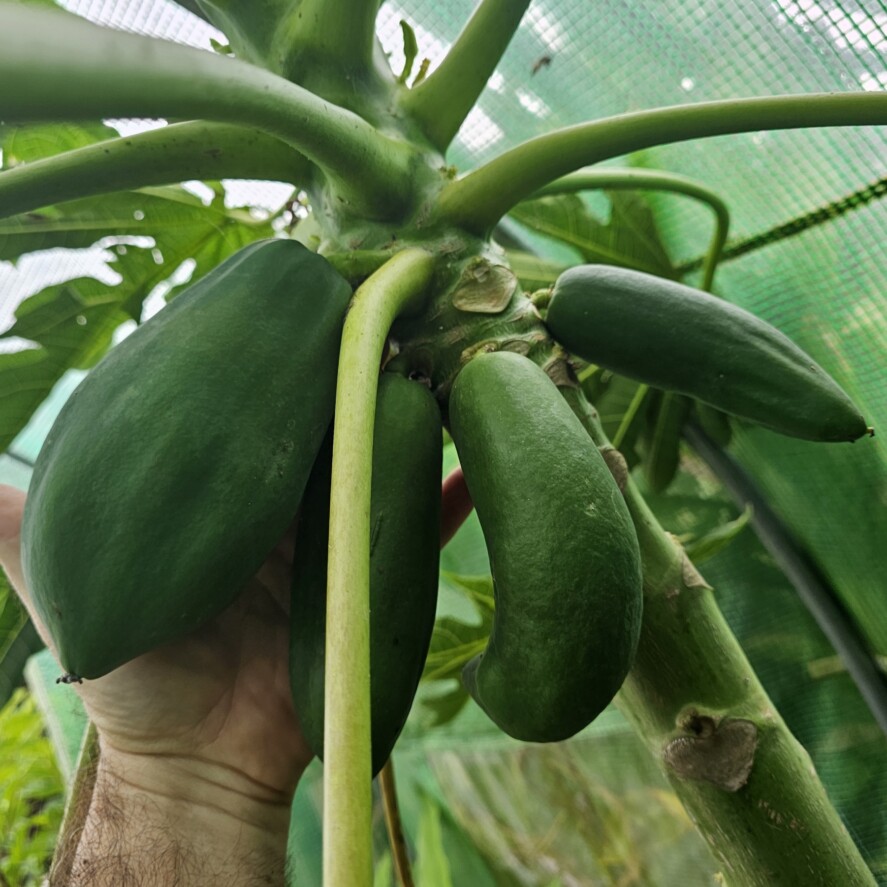-
Troppo Plant & Garden Articles
- Te Puke Region
- TROPPO’s Food Forest in Te Puke, BOP (www,foodforest.org.nz)
- Troppo’s Plant Collection
- TROPPO's Nursery Directory
- Food Forests of New Zealand (www.foodforests.nz)
- Nursery Map - Plant Suppliers of NZ Directory (www.nurserymap.nz)
- Kids Garden Corner
- New Zealand Garden Bird Survey
- New Zealand Garden Groups
- Delicious Recipes
Creating Your Own Urban Food Forest in Te Puke, NZ: A Step-by-Step Guide

Imagine stepping out your back door and into a lush, edible paradise. A place where fruit trees, berry bushes, and useful herbs grow in harmony, providing fresh, nutritious food right at your fingertips. This isn’t a far-off dream – it’s the reality of an urban food forest, and you can create one right here in Te Puke!
This guide will walk you through the steps to design and establish your own thriving urban food forest, even if you’re new to gardening. We’ll focus on practical advice tailored to our local climate and conditions.
What is an Urban Food Forest?
Think of a natural forest, but designed with edible plants. It’s a layered system that mimics nature, where different types of plants work together to create a productive and self-sustaining ecosystem. This means less work for you in the long run!
Why Create a Food Forest in Te Puke?
- Fresh, Local Food: Enjoy delicious, organically grown produce without leaving your property.
- Increased Biodiversity: Attract beneficial insects, birds, and pollinators to your garden.
- Soil Health Improvement: Food forests help build healthy, fertile soil over time.
- Reduced Waste: Less reliance on store-bought produce means less packaging and food miles.
- Beauty and Tranquility: Create a beautiful and peaceful green space in your urban environment.
- Resilience: A diverse food forest is more resilient to pests and diseases.
Step 1: Planning and Observation – Understanding Your Space
Before you even think about planting, take some time to get to know your site.
- Sunlight: Observe how sunlight moves across your property throughout the day. Note areas that are full sun (at least 6 hours), partial shade (4-6 hours), and full shade (less than 4 hours). This will help you choose the right plants for each location.
- Water Drainage: How well does your soil drain after rain? Are there any areas that stay consistently wet? Good drainage is crucial for most plants.
- Wind: Are there any strong winds that might affect young or delicate plants? Consider natural windbreaks or plan for protective structures.
- Soil Type: What kind of soil do you have? Is it sandy, clay-like, or loamy? You can do a simple squeeze test (sandy won’t hold its shape, clay will form a tight ball, loam is somewhere in between). Knowing your soil helps you choose plants that will thrive and determine if you need to amend it.
- Existing Vegetation: Note any existing trees, shrubs, or other plants. Can they be incorporated into your food forest design?
- Space and Layout: Sketch out your property and consider the available space. Think about pathways, seating areas, and where different layers of your food forest will go.
Step 2: Designing Your Food Forest – The Layers
A food forest typically has several layers, mimicking a natural woodland:
- Canopy Layer (Tall Trees): These are your largest fruit and nut trees. Choose varieties that do well in the Te Puke climate, such as avocados, feijoas, citrus (lemons, oranges, mandarins), and perhaps even subtropical options like mangoes or passionfruit if you have a sheltered spot. Consider dwarf or semi-dwarf varieties for smaller urban spaces.
- Understory Layer (Smaller Trees and Large Shrubs): This layer includes smaller fruit trees (like dwarf apples or pears), berry bushes (like blueberries, raspberries, and currants), and taller shrubs (like elderberry or feijoa hedges).
- Shrub Layer (Smaller Bushes): This layer features smaller berry bushes (like strawberries and gooseberries), culinary herbs (like rosemary and sage), and flowering shrubs that attract beneficial insects.
- Herbaceous Layer (Ground Cover): This layer includes perennial vegetables (like asparagus and rhubarb), culinary and medicinal herbs (like mint, chamomile, and comfrey), and groundcover plants that help suppress weeds and retain moisture.
- Root Layer (Underground Edibles): Think about root vegetables like yams, kumara (sweet potato), and edible bulbs like garlic and onions.
- Climbers (Vines): Vertical space can be utilized with climbing fruits like passionfruit, grapes, or kiwifruit (ensure you have a sturdy support structure).
- Fungi Layer: Consider incorporating edible mushrooms into shady, moist areas.
When choosing plants, always research varieties that are well-suited to the Te Puke climate (mild, wet winters and warm, humid summers) and your specific microclimate. Visit local nurseries for advice and inspiration.
Step 3: Soil Preparation – Building a Healthy Foundation
Healthy soil is the backbone of a thriving food forest.
- Soil Testing: Consider getting your soil tested to understand its pH and nutrient levels. This will help you determine if any amendments are needed. Your local garden centre or agricultural supply store can often provide testing services or kits.
- Sheet Mulching (Lasagna Gardening): This is a fantastic no-dig method for building healthy soil, suppressing weeds, and retaining moisture. Layer cardboard or newspaper (carbon), followed by green materials like grass clippings, vegetable scraps, and compost, alternating layers like making a lasagna. Top with a thick layer of mulch like wood chips or straw.
- Adding Compost: Incorporating plenty of well-rotted compost adds essential nutrients and improves soil structure.
- Improving Drainage: If you have poorly draining areas, consider creating raised beds or incorporating organic matter to improve drainage.
Step 4: Planting Your Food Forest – Bringing Your Design to Life
- Start Small: You don’t have to plant everything at once. Begin with a few key plants and gradually expand your food forest over time.
- Consider Spacing: Give your plants enough room to grow to their mature size. Overcrowding can lead to competition for resources and increased disease risk.
- Planting Time: The best time to plant in Te Puke is generally in spring or autumn when the soil is moist and the weather is mild.
- Watering: Water your newly planted trees and shrubs regularly, especially during dry periods, until they become established.
- Mulching: Apply a thick layer of organic mulch (wood chips, straw, or shredded leaves) around your plants. This helps retain moisture, suppress weeds, and regulate soil temperature.
Step 5: Ongoing Care and Maintenance – Nurturing Your Ecosystem
A food forest is designed to be relatively low-maintenance, but some care is still required.
- Watering: Continue to water during dry spells, especially during the first few years. Once established, your food forest should be more drought-tolerant.
- Weeding: While mulch helps suppress weeds, you’ll still need to do some hand-weeding, especially when your food forest is young.
- Pruning: Prune fruit trees and shrubs as needed to maintain their shape, improve airflow, and encourage fruit production. Learn about the specific pruning needs of each plant.
- Pest and Disease Management: Encourage beneficial insects by planting flowers that attract them. Monitor your plants for any signs of pests or diseases and address them using organic methods if necessary. A healthy, diverse food forest is naturally more resistant to problems.
- Harvesting: Enjoy the fruits (and vegetables, herbs, etc.) of your labor! Learn the best time to harvest each plant for optimal flavor and storage.
- Observation and Adaptation: Continuously observe your food forest and make adjustments as needed. Notice what’s thriving and what might need a little extra attention.
Embrace the Journey
Creating an urban food forest is a rewarding journey that connects you with nature and provides a sustainable source of food. Don’t be afraid to experiment and learn as you go. With a little planning and effort, you can transform your Te Puke property into a vibrant and productive edible landscape.
#UrbanFoodForest #FoodForestNZ #EdibleGarden #Permaculture #TePukeGardening #GrowYourOwnFood #SustainableLiving #BackyardOrchard #Homegrown #BayOfPlentyGardening

